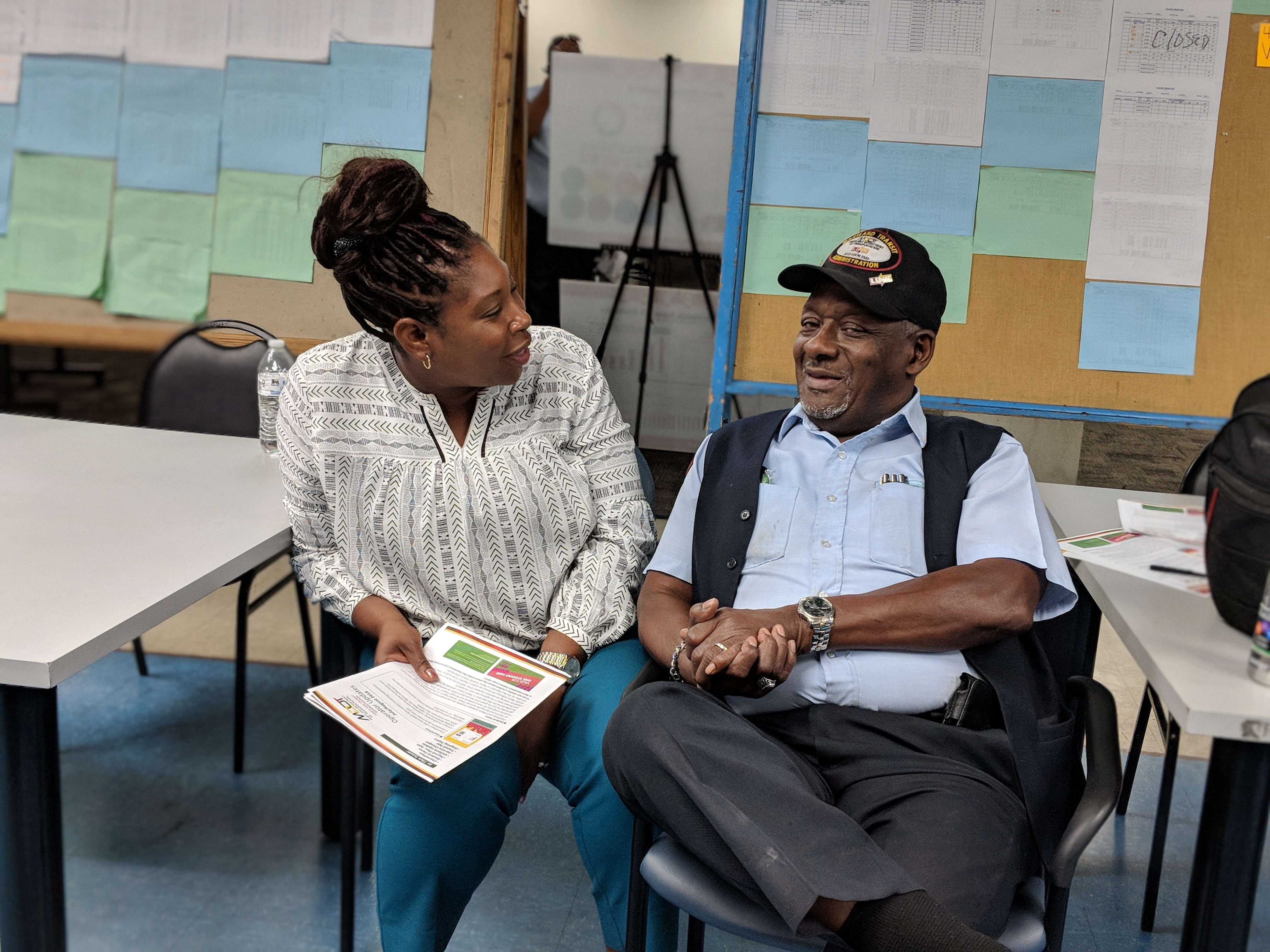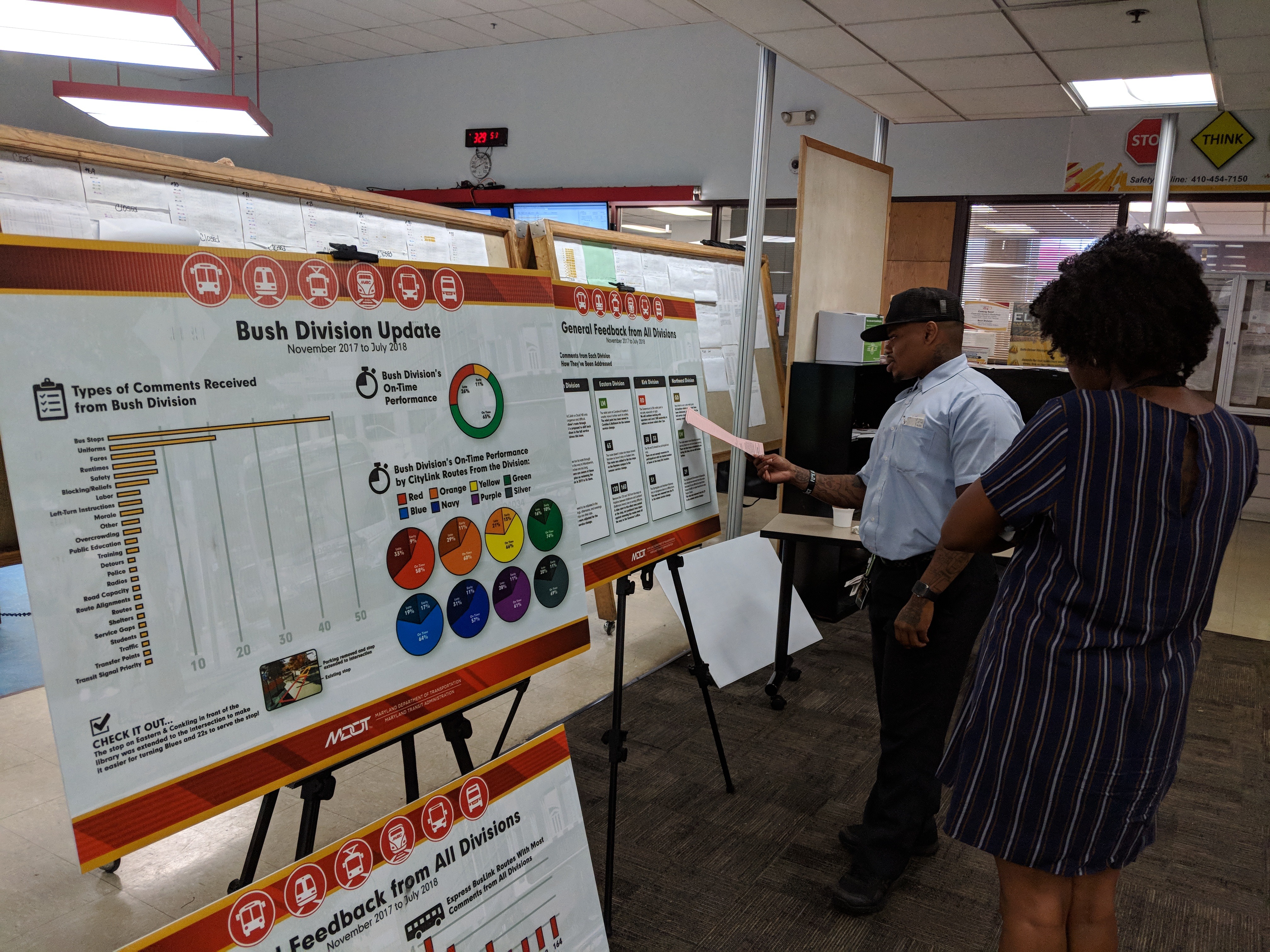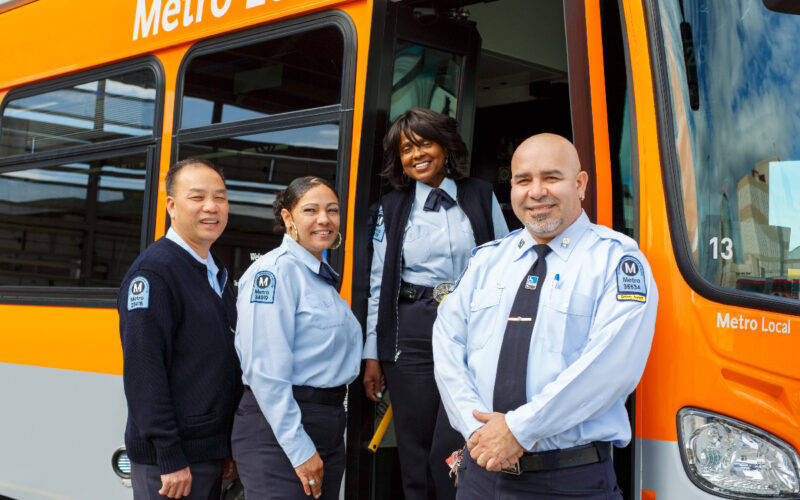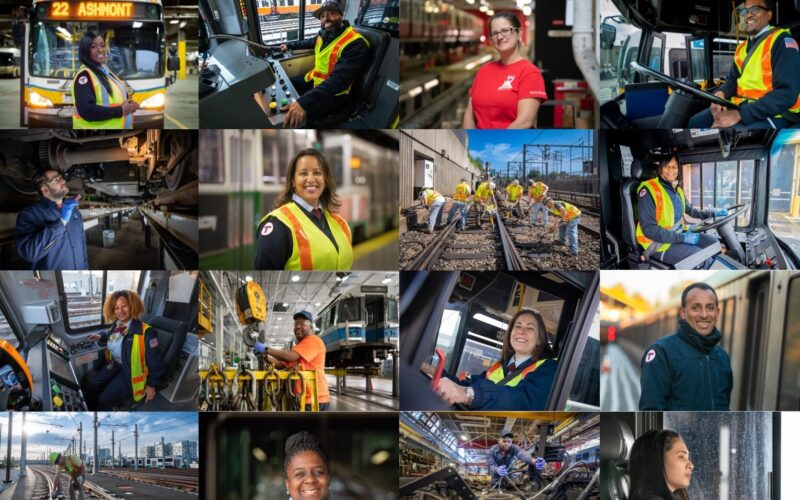
When the Maryland Transit Administration redesigned Baltimore’s bus network in 2016, communication gaps between agency planners and bus operators quickly became apparent.
“During the redesign process, we found that the public knew things about the network and the service that the operators didn’t,” says the MTA’s Keisha Farrell, who worked in the agency’s public outreach division at the time. Bus operators felt like they hadn’t been included in the planning process. They vented their frustrations to riders, coloring the public’s impression of the redesign.
Agency executives realized they needed to improve communication between management and frontline employees. To create better channels for receiving and responding to bus operator feedback, MTA Administrator Kevin Quinn tapped Farrell to lead the agency’s new “in-reach” program.
Though just a few years old, the in-reach program is already showing results. Bus operator morale is improving, and scheduling is now more reflective of conditions in the real world.
How can we help you?
MTA has historically communicated with its operators by sending staff out to the different bus divisions to conduct PowerPoint workshops or town hall-style meetings. But that format didn’t reach most bus operators. Messages were distributed unevenly. “We were maybe capturing 300 people, and there were another 1,200 people that we were not communicating with at all,” explains Farrell.
To address these shortcomings, the in-reach program has developed a suite of communications methods that increase the visibility of management, and better meet operators where they are.
Instead of workshops, in-reach staff now hold open hours for operators at different divisions to come share feedback. “We now ask them questions like, ‘What’s a concern? How can we help you? What would make it better?’” says Farrell.
Through this process, MTA has made changes to scheduled run times, posted more legible fare information to buses, and improved restroom access for bus operators.
To build trust and dialogue, the program also facilitates “Coffees with Administrator Quinn,” where operators have coffee with Quinn and agency executives. In-reach also hosts semi-regular brown bag lunches and round tables. And to ensure everyone receives the same information, the in-reach program broadcasts relevant updates and changes on digital screens at all divisions, and sends out a newsletter.
 Displays convey how MTA management is responding to feedback from bus operators.
Displays convey how MTA management is responding to feedback from bus operators.
Farrell also created comment boxes and put them out at every division to solicit feedback from bus operators. At first, operators dismissed them as a waste of their time. Many were convinced that at best, their feedback would never see daylight, or at worst, that they would be retaliated against.
Farrell changed this perception by creating a system that’s transparent and responsive. She calls operators when she doesn’t understand their questions, which has made them feel like someone is actually listening. She also created display boards to show operators exactly what was being done with feedback. “We’ll list the comments that we get from the operators, and then we list what the solution was, or what we did with it, or how we need to change,” she says. Farrell says the MTA is in the process of creating a digital portal where operators can more easily input and track comments.
Farrell attributes this new culture of accountability to Quinn, who was appointed as head administrator in 2017. “Kevin wants to see results. He’s like, ‘You’ve been doing all of this stuff, but what have you done with it? What are you doing with all this information that they’ve provided to you?’ And so actually taking the time to apply this feedback from our frontline has been a huge shift for us as an agency.”
Measuring success
One way that MTA is measuring the success of the program is by monitoring employee morale, which Farrell says is key to running a successful agency. “If the employees feel like we have their back and vice versa, then they’re willing to step up and do things that maybe they ordinarily wouldn’t – like doing an extra half a trip if their relief doesn’t show up on time, or come in on an off day and do some overtime,” says Farrell.
The program is also tackling a longstanding source of frustration – scheduling. Schedules that don’t match up with the actual time it takes to complete a run have historically made life difficult for MTA operators. They find themselves constantly arriving early or late to stops, which angers customers, and in the latter case, leaves no time for a break.
In response, the agency has worked with the union to form a “scheduling committee” made up of agency schedulers and operators. The committee solicits inputs from operators, and then uses the software Swiftly to identify choke points along routes, validating operator input with real-life data.
“The schedule is like a giant puzzle that we’re all trying to piece together to make all of these parts work, and to make operators a part of that process so that they understand what’s going on and so they’re more invested in the success of the process,” explains Farrell. She’s proud that over 30% of service changes in February of 2019 resulted from front-line employee input, and most operators now rate their schedules as “pretty good.”
She also credits the program with improving the sometimes uneasy relationship between the MTA’s frontline employees, the union, and management. “We recognize that it’s in the interest of the MTA and of the riding public to ensure that we provide them the best service with employees who are happy to do what they’re doing, with a positive outlook and demeanor. So with that end in mind, the relationship has become less hostile, less volatile.”
What’s next?
Farrell says she’s fielded several requests from other transit agencies for more information about her program, and is putting together a manual to streamline the process of setting up an in-reach division elsewhere. But she says transit agencies don’t need to wait until it comes out to start making changes. “Don’t be afraid to talk to your operators,” she says. “They are a valuable asset and they see things with a set of eyes that people who sit in the office all day don’t.”
 New Drug Testing Rule from USDOT Could Help Alleviate the Bus Operator Crisis
New Drug Testing Rule from USDOT Could Help Alleviate the Bus Operator Crisis
New drug testing rules from the USDOT could make it easier for transit agencies to recruit more operators - but only if they implement the rule.
Read More MBTA Partners with Union to Reach Historic Wage Agreement
MBTA Partners with Union to Reach Historic Wage Agreement
The Massachusetts Bay Transportation Authority and its union, Carmen’s Local 589, reached a historic agreement to increase bus operators' starting wages from $22.21 to $30 an hour, shifting MBTA operators from the lowest paid to the highest paid in the transportation industry.
Read More